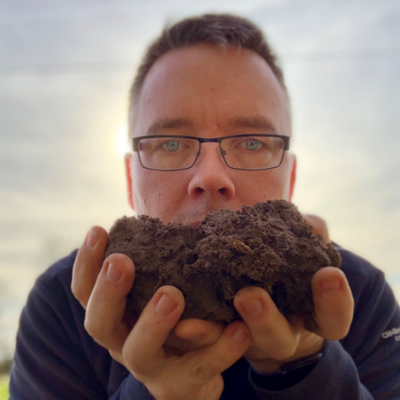Written by Steve Hollaway, Soil Fertility Services
Ask anyone to define healthy soil and you will get a multitude of varying replies that will probably include having a good number of worms; friable soil with a texture that’s similar to chocolate cake; unhindered vigorous crop rooting and so on…
But, have you considered what must happen first? After all, these factors must surely be a consequence of having healthy soil.
Some will say that no-till will, by its own action (or lack of it), over time encourage natural improvements; after all, you minimise soil disturbance thereby allowing its inhabitants to carry about their daily business and fungi will be free to make their intertwining networks throughout the soil’s profile, symbiotically extending a crop’s root system and liberating vital locked up elements. So if the mere mention of using steel to aerate sounds like heresy, then you need to read on!
Ask yourself, what would a soil do if left alone? It would first begin the process of self-healing, covering itself with natural protection against the harmful and sometimes damaging elements – that might involve growing weeds. As this armour continues to spread across the surface, it also sets down its sugar factories (it’s roots) into the earth, each one creating tiny biological highways that act like conduits for water and air. As the atmosphere in these biomes begins to improve, so too does its ‘Bio’ inhabitants’ ability to maintain and build a more resilient soil ecosystem.
Unlike bacterial life, fungi are slower to develop their associations and networks, but remember, they are picky bedfellows and won’t choose to communicate with every plant. In general terms it is agreed, that the longer a soil gets left to its own devices, the more it shifts to be fungal-dominated; but is that what you really want, after all, cereals prefer a slightly bacterial-dominated soil.
In a nature-led system, you would see migrating animals both grazing and fertilising, cycling nutrients and often the mere act of travelling through would create some soil disturbance, so the system supports itself quite well without any intervention either chemically or from steel. If we said that steel is the answer to improving soil aeration you would probably throw your hands in the air but hear me out first…
“The heresy of one age becomes the orthodoxy of the next” – Helen Keller
When Grandad had his Massey 35 and went ploughing, it was done by eye – slow and steady and considered; with minimal horsepower came the limiting restriction on how deep and how much soil could actually be turned over. He felt that when he ploughed, the soil was actively getting a reset and it probably was, but you do not need a reset every year, far betterto haveaprescriptive tillage approach to match individual field needs.
Over 50 years ago Americans started using anionic surfactants as a way of ‘opening up’ their soils; these products were applied with a sprayer directly to the soil, whereby they allowed bound water and locked together elements to move more freely, thus creating a much-improved soil environment for roots and biological life to flourish.
As gravity pulled these products down through the contours of the soil they continued to condition and improve air and water infiltration; with sustained use, these would become very efficient pan busters.
Back in the 1990’s Soil Fertility Services was the first to bring this sometimes called “Snake Oil” across the water, whereby it evolved into the product that it is today.
So, you’re still ‘Re-gen’? Remember that does not necessarily make you ‘New-gen’; make the most of the lessons and experiences of the past as you move to the future.


